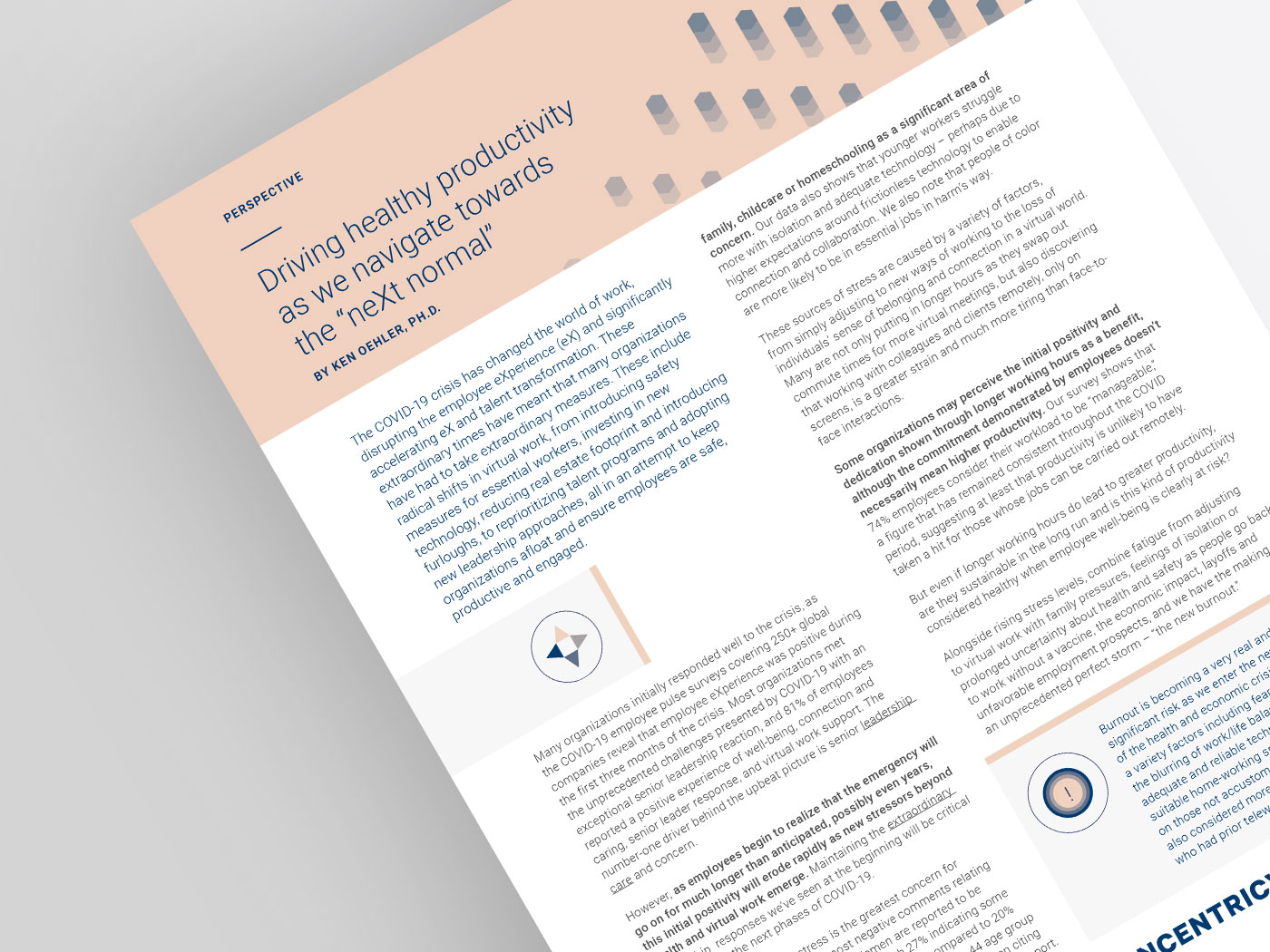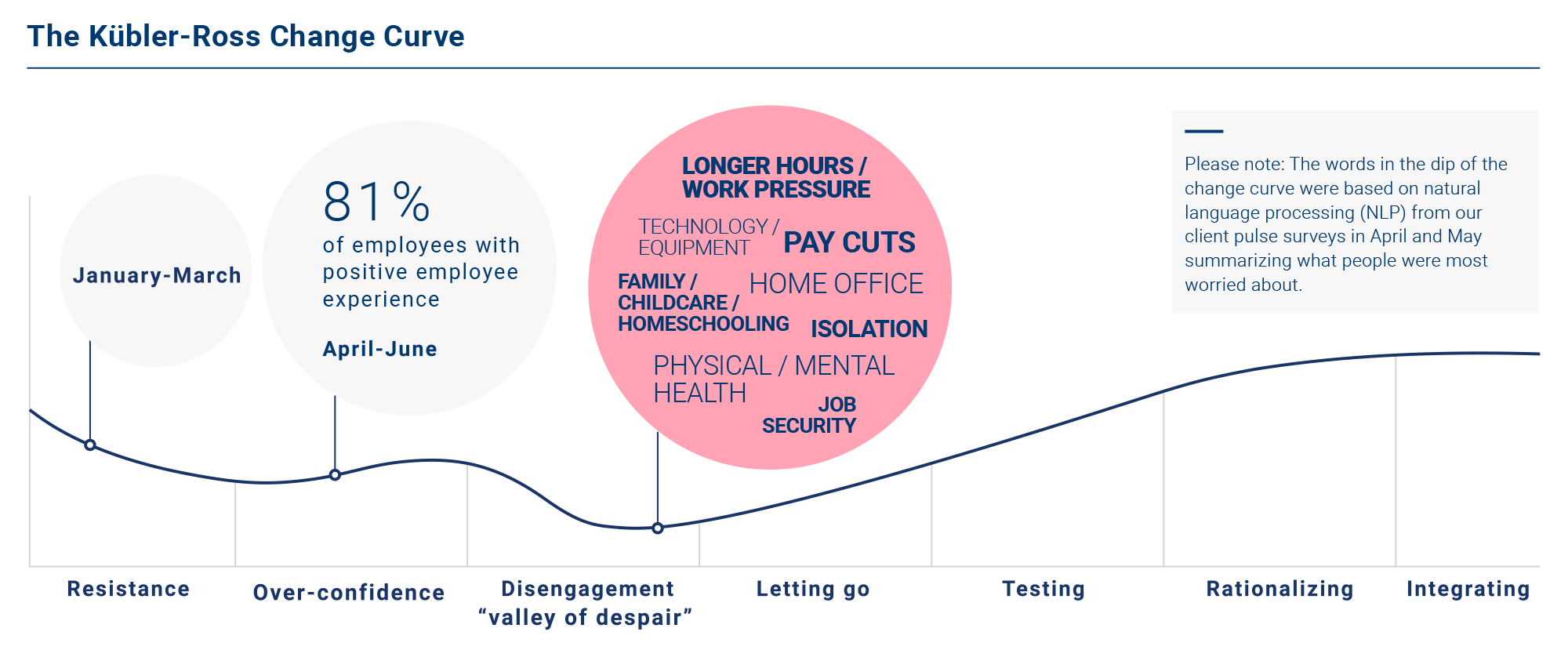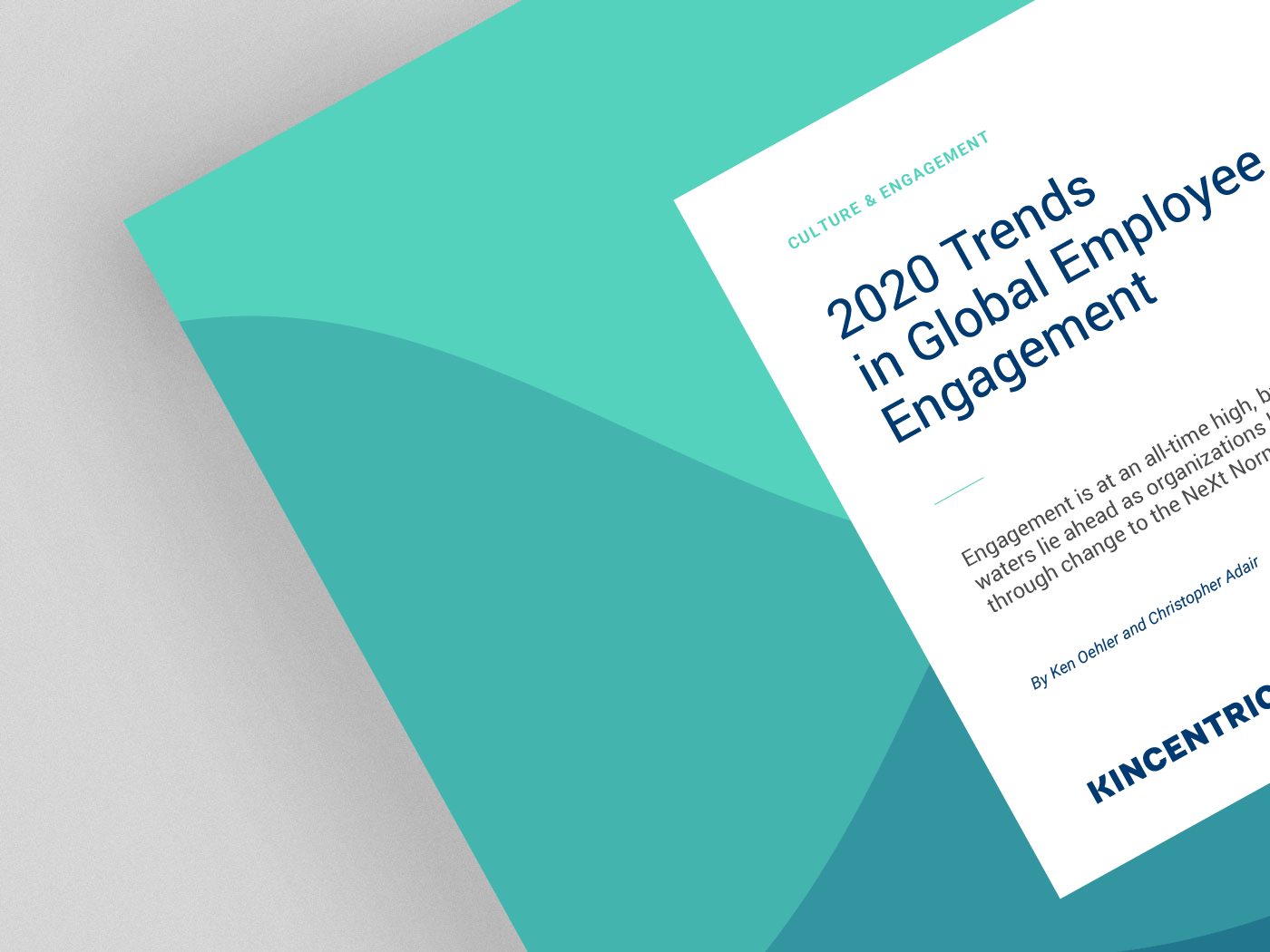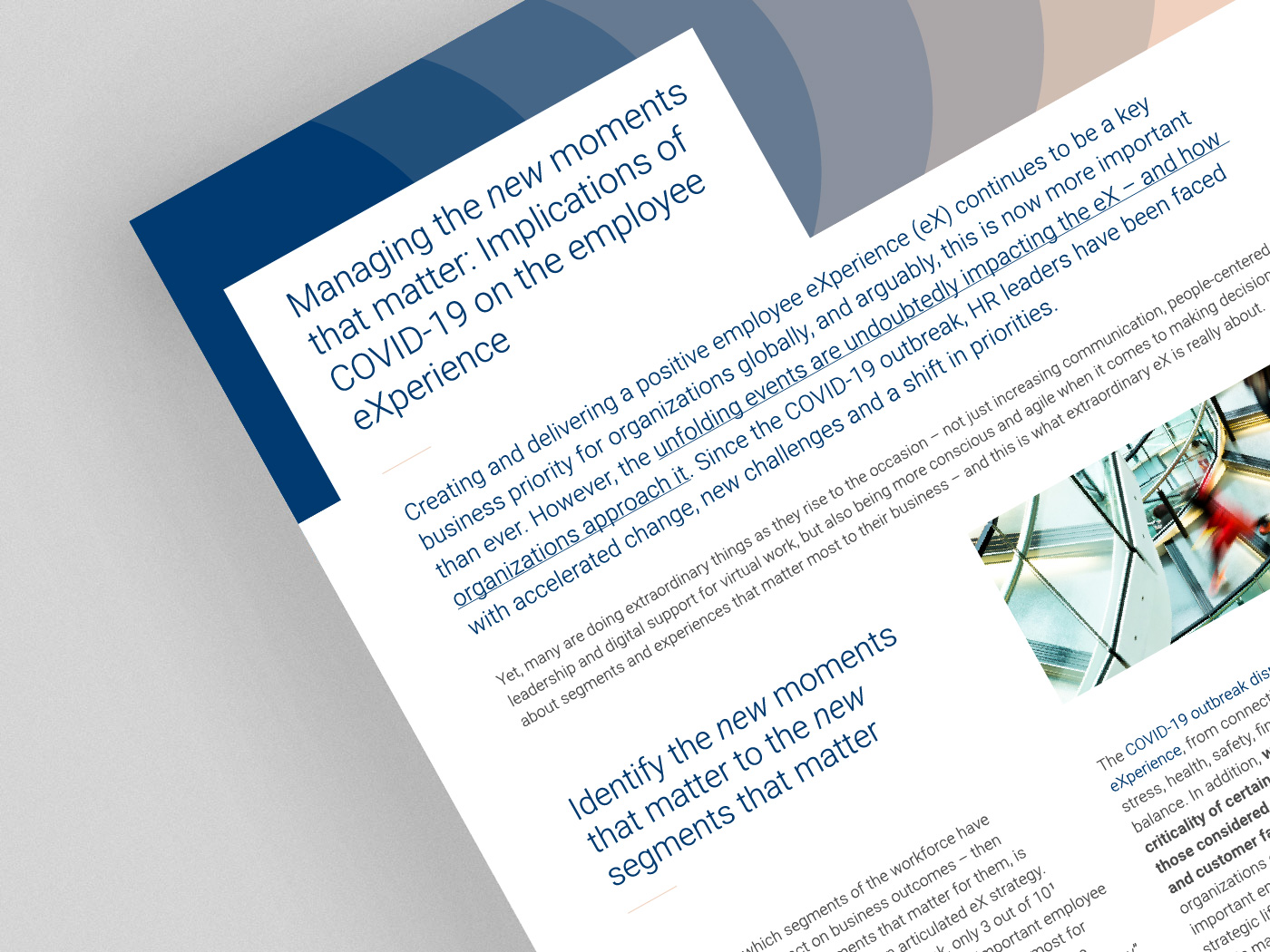
The COVID-19 crisis has changed the world of work, disrupting the employee eXperience (eX) and significantly accelerating eX and talent transformation. These extraordinary times have meant that many organizations have had to take extraordinary measures. These include radical shifts in virtual work, from introducing safety measures for essential workers, investing in new technology, reducing real estate footprint and introducing furloughs, to reprioritizing talent programs and adopting new leadership approaches, all in an attempt to keep organizations afloat and ensure employees are safe, productive and engaged.
Many organizations initially responded well to the crisis, as the COVID-19 employee pulse surveys covering 250+ global companies reveal that employee eXperience was positive during the first three months of the crisis. Most organizations met the unprecedented challenges presented by COVID-19 with an exceptional senior leadership reaction, and 81% of employees reported a positive experience of well-being, connection and caring, senior leader response, and virtual work support. The number-one driver behind the upbeat picture is senior leadership care and concern.
However, as employees begin to realize that the emergency will go on for much longer than anticipated, possibly even years, this initial positivity will erode rapidly as new stressors beyond health and virtual work emerge. Maintaining the extraordinary leadership responses we’ve seen at the beginning will be critical in navigating the next phases of COVID-19.
Our survey reveals that stress is the greatest concern for employees, with 25% of the most negative comments relating to anxiety and health concerns. Women are reported to be experiencing higher levels of stress, with 27% indicating some challenges managing COVID-related stress, compared to 20% of men – a 7-percentage-point difference. The 35–44 age group reports the highest levels of stress, with men and women citing different experiences, drivers of anxiety and priorities for support. Women are twice as likely as men in this age group to mention family, childcare or homeschooling as a significant area of concern. Our data also shows that younger workers struggle more with isolation and adequate technology – perhaps due to higher expectations around frictionless technology to enable connection and collaboration. We also note that people of color are more likely to be in essential jobs in harm’s way.
These sources of stress are caused by a variety of factors, from simply adjusting to new ways of working to the loss of individuals’ sense of belonging and connection in a virtual world. Many are not only putting in longer hours as they swap out commute times for more virtual meetings, but also discovering that working with colleagues and clients remotely, only on screens, is a greater strain and much more tiring than face-to-face interactions.
Some organizations may perceive the initial positivity and dedication shown through longer working hours as a benefit, although the commitment demonstrated by employees doesn’t necessarily mean higher productivity. Our survey shows that 74% of employees consider their workload to be “manageable,” a figure that has remained consistent throughout the COVID period, suggesting at least that productivity is unlikely to have taken a hit for those whose jobs can be carried out remotely.
But even if longer working hours do lead to greater productivity, are they sustainable in the long run and is this kind of productivity considered healthy when employee well-being is clearly at risk?
Alongside rising stress levels, combine fatigue from adjusting to virtual work with family pressures, feelings of isolation or prolonged uncertainty about health and safety as people go back to work without a vaccine, the economic impact, layoffs and unfavorable employment prospects, and we have the making of an unprecedented perfect storm – “the new burnout.”
Burnout is becoming a very real and significant risk as we enter the next phases of the health and economic crisis, caused by a variety of factors including fear of job losses, the blurring of work/life balance, isolation, adequate and reliable technology, and a suitable home-working space. The impact on those not accustomed to virtual work is also considered more severe than for those who had prior telework experience.
The majority of organizations acknowledged the risk of stress and burnout during the COVID period and took immediate actions. As many as 56% have invested in wellness and employee assistance/stress management in the last few months. This percentage is even higher (69%) at the extraordinary companies, who strive to deliver a differentiated employee eXperience. Well-being will remain high on organizations’ agendas in the next 12 months, as 40% plan to continue to invest in stress management. Productivity of virtual work will also remain crucial, as it might ease some of the pressure and increase the efficiency of working remotely. Half (50%) of companies and 57% of extraordinary organizations are intending to invest in new technology to support this in the coming year.
We are not living in a straightforward pre- and post-COVID-19 world, but a pre- and post-vaccine one. The virus itself is fluid and changing and not a single event. Elisabeth Kübler-Ross’s stages of change curve has shown this in the past. Employee engagement reached a high point at the peak of the Great Recession and then fell significantly a year later after the downturn had technically passed, but the economic uncertainty, cost-cutting, workforce reductions and unemployment fallout continued. We are still in the early stages of COVID-19 and starting to see things get much more difficult.

The importance of extraordinary leadership, as companies and their workforces face up to a long period of uncertainty ahead, is essential to promoting healthy productivity and managing the risk of burnout. Moments of the employee eXperience that really matter must be consciously managed as leaders, managers and employees go through the different phases of the change cycle and navigate towards the neXt normal.
Be agile in rethinking your talent and eX strategy: A more agile approach to people strategy is required, as the road to the “neXt normal” will not be a straight line. Business strategy and talent implications will vary from stage to stage and uncertainty will continue to persist, but doing nothing is not an option. Define the talent segments that are required to build or reinforce your capabilities to execute your business strategy and adapt to uncertainty. We are seeing gender, ethnicity and age segments elevate in this crisis as critical pertaining to experiences of inclusion, support and well-being. Virtual talent strategies that span these and more traditional job family segments must be ready for the neXt normal. Pay special attention to the segments at risk for burnout and remove as much friction as possible for them to provide the experiences they need to be motivated, productive and engaged.
Support and develop caring and engaging leaders: The importance of leaders leading through change with human connection, empathy, understanding, candor and resilience, and how positively this affects the employee eXperience, cannot be underestimated. We know that connection and caring are what employees say they want during cycles of change. These change curves seem to keep resetting weekly, and leaders must step up and connect to help employees and organizations navigate. These are the muscles leaders will have to continue to develop over the coming months and will be the best course of action for easing the stress of the negative experience for many in their workforce as they go through change and loss. Assess and develop your leaders to demonstrate engaging leader behaviors of inspiration, empathy, authenticity and empowerment, as these are the same leadership skills that will be required in the neXt normal as well.
Continue to build an employee-centric HR: HR has reacted in an agile and employee-centric way to the crisis. Take the lessons learned and develop a more integrated and outside-in HR function for the neXt normal. Review your pre-COVID HR operating model to make sure you can deliver on the new strategy and execute the critical initiatives. Be prepared to break down silos and deliver integrated solutions. Make sure to have the required enablers in place (leadership, governance, HR capabilities, agility, technology, analytics) so that your HR service delivery and solution design align with your desired eX.
Understand and adjust the eX with ongoing, targeted pulses: Frequently ask for employee insights and suggestions to successfully navigate through the changes – faster, action-oriented feedback loops are here to stay. Targeted pulses on specific topics like returning to work, or continuing to work remotely, for specific audiences like essential workers, parents, women and remote colleagues will help you understand what employees need to stay safe, feel included, and be productive and engaged. As the situation is constantly evolving, short, frequent pulse surveys with relevant content on workload, stress, safety and well-being will provide an accurate snapshot of the actual employee eXperience and support the agile decision-making to adjust quickly in this rapidly changing environment. Supplemented with open text information and technologies like natural language processing, they can also help surface themes, sentiment, unknown risks and suggestions for addressing unmet needs.
The question of whether COVID-19 is here to stay is yet to be answered, but one thing we can be sure of is that we cannot go back to the way we were before. Senior leaders, HR and managers clearly have an important role to play in driving a more positive employee eXperience and ensuring their organizations can successfully pivot and adapt to new ways of working in the “neXt normal.” By following these key steps, organizations can reduce the looming risk of burnout, and instead build a culture of healthy productivity with engagement and well-being at the forefront.
We would like to thank Ken Oehler, Ph.D. for contributing his insights to this article.

Employee Engagement is at an all-time high, but rough waters lie ahead as organizations lead through change to the NeXt Normal.

Creating and delivering a positive employee eXperience (eX) continues to be a key business priority for organizations globally.
Multiple translations are available.

What matters the most in leadership is the unique connection forged between a leader and each and every individual member of the team.